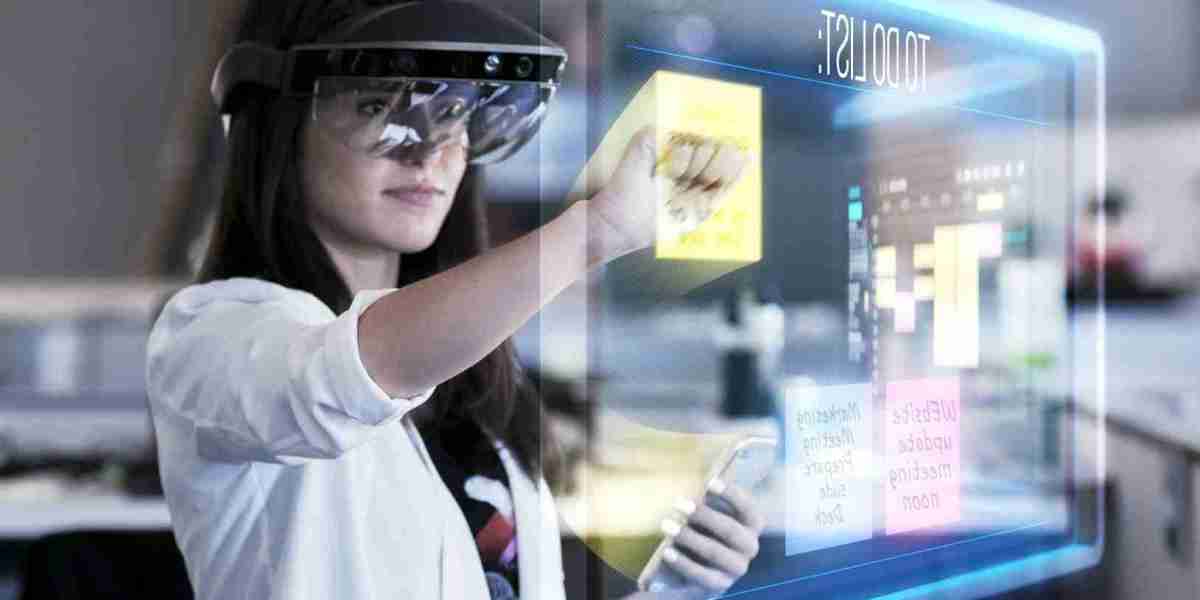The immersive worlds of Augmented Reality (AR) and Virtual Reality (VR) are no longer confined to the realm of science fiction. Over the past few years, both technologies have evolved significantly, moving from niche applications to mainstream industries. With advancements in hardware, software, and cloud technologies, the augmented reality and virtual reality market are positioned for exponential growth in the coming decade. From entertainment to healthcare, education, and retail, these technologies are set to transform how we interact with the world around us.
Augmented Reality (AR): Bridging the Physical and Digital Worlds
Augmented Reality overlays digital information onto the physical world, enhancing our experience without replacing reality. Unlike Virtual Reality, which immerses the user in a completely digital environment, AR maintains the connection to the real world. The AR market, valued at approximately $30 billion in 2021, is projected to grow at a compound annual growth rate (CAGR) of 40.3%, reaching nearly $300 billion by 2028.
Several sectors are benefiting from AR’s unique capabilities. In retail, companies like IKEA and L'Oreal have already leveraged AR to allow customers to visualize products in their homes or try on virtual makeup. This offers not only an innovative shopping experience but also a practical solution for reducing return rates and increasing consumer satisfaction.
The healthcare industry is also adopting AR for surgeries, diagnostics, and medical training. Surgeons are using AR glasses to overlay critical patient data and 3D images of organs during operations, enhancing precision and reducing the likelihood of errors. Furthermore, AR is being used in therapy for mental health disorders, such as PTSD and anxiety, by immersing patients in controlled, virtual environments to simulate real-world scenarios for exposure therapy.
Virtual Reality (VR): A New Frontier in Immersive Experiences
In contrast, Virtual Reality creates entirely new digital environments, allowing users to step into a world of simulation. With VR, users can interact with 3D environments in ways that feel real, making the technology particularly appealing to the gaming and entertainment industries. The VR market, which was valued at around $6 billion in 2020, is projected to grow at a CAGR of 21.6%, reaching over $70 billion by 2027.
The gaming industry remains the driving force behind VR’s growth. With companies like Sony, Oculus, and HTC pushing boundaries with VR headsets and controllers, the gaming experience has become more immersive than ever before. VR offers players an unprecedented level of interactivity, from first-person shooters to virtual escape rooms. But gaming is just the tip of the iceberg.
Education is increasingly adopting VR to create interactive learning environments. Virtual field trips, simulated lab experiments, and historical reenactments are just a few of the ways that VR can transform traditional education. In fact, a report by PwC revealed that VR-based training is four times faster and 275% more effective than traditional classroom-based learning.
The healthcare industry is also tapping into VR's potential for medical training and therapy. Doctors can practice surgeries in a risk-free, virtual environment, improving their skills before performing real-world procedures. Additionally, VR is being used in pain management, helping patients deal with chronic pain or undergoing rehabilitation by immersing them in relaxing, virtual environments.
Convergence of AR and VR: A Unified Future
The lines between AR and VR are gradually blurring as the two technologies converge to create mixed reality (MR). In MR, users can experience a blend of both virtual and real-world environments. This could mean wearing a headset that blends physical objects with virtual interfaces or interacting with digital characters that respond to the physical world in real-time. The convergence of AR and VR could unlock new business models and applications across various sectors.
For instance, in real estate, potential buyers might use MR to take a virtual tour of a property while interacting with real-time data about the house, such as pricing, neighborhood statistics, and nearby schools. In architecture, MR can allow designers to visualize buildings and landscapes in their actual locations, making it easier to evaluate how new structures will impact the environment.
Challenges and Barriers to Growth
Despite the exciting potential, there are several challenges hindering the widespread adoption of AR and VR. The most prominent barrier is the high cost of hardware, including headsets, sensors, and computing power. While prices have decreased over the years, the initial investment remains a deterrent for many consumers and businesses.
Another challenge is content creation. For AR and VR to reach their full potential, developers need to produce high-quality, engaging, and interactive content. This requires specialized skills and tools, which are still in the process of becoming more accessible to a wider pool of creators.
Conclusion: The Future of AR and VR
The market potential for AR and VR is vast, with applications expanding far beyond entertainment. These technologies are poised to revolutionize industries ranging from healthcare and education to retail and real estate. As hardware becomes more affordable and content creation tools improve, the barrier to entry for both developers and consumers will lower, accelerating market growth.
While challenges still exist, the future of AR and VR looks incredibly promising. With technological advancements, strategic investments, and the growing demand for immersive experiences, AR and VR will likely become a staple of everyday life, shaping the way we work, learn, shop, and play for years to come.




